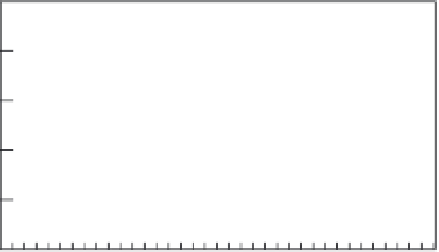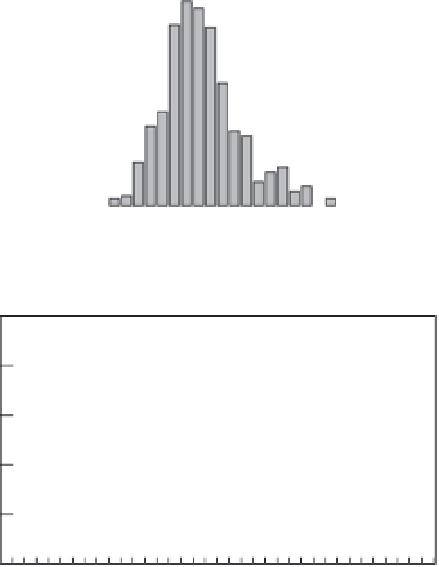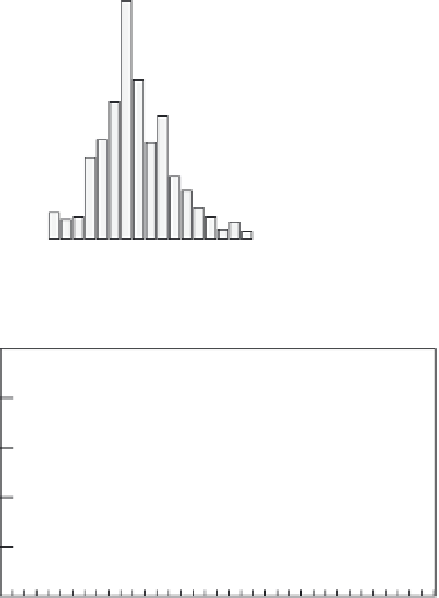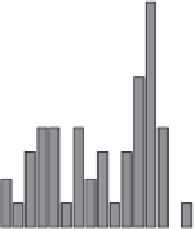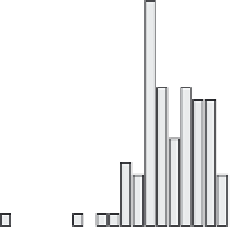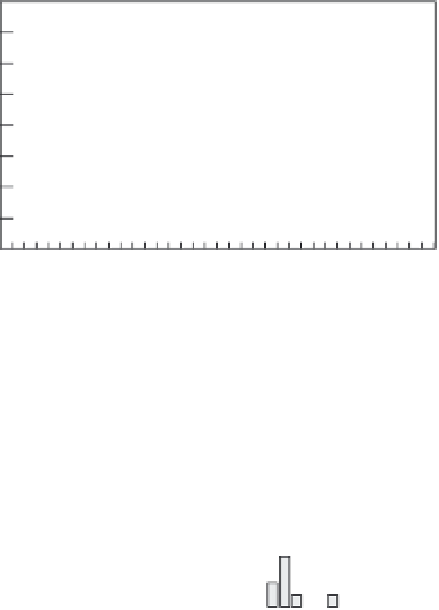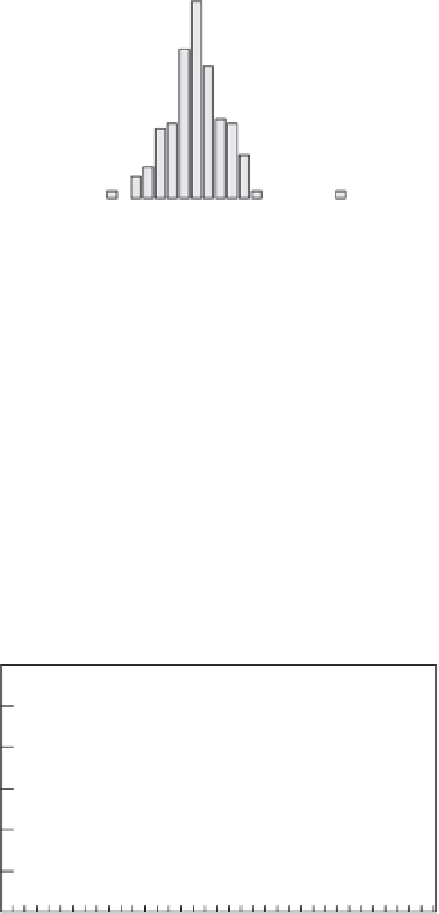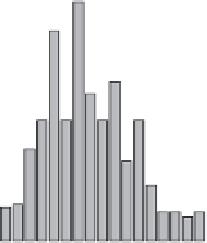Geoscience Reference
In-Depth Information
Shields
Platforms
50
80
mean
41.85
mean
41.44
70
40
60
50
40
30
20
10
0
30
20
10
0
10
20
30
40
50
60
70
80
10
20
30
40
50
60
70
80
Crustal Thickness (km)
Crustal Thickness (km)
Extended Crust
Basins
100
20
mean
30.95
mean
43.68
80
15
60
10
40
5
20
0
0
10
20
30
40
50
60
70
80
10
20
30
40
50
60
70
80
Crustal Thickness (km)
Crustal Thickness (km)
Large Igneous Provinces
Orogens
10
60
mean
35.46
mean
42.62
50
8
40
6
arcs
33.52
forearcs
28.66
30
4
20
2
10
0
0
10
20
30
40
50
60
70
80
10
20
30
40
50
60
70
80
Crustal Thickness (km)
Crustal Thickness (km)
Fig. 8.2
Crustal thickness histograms for various tectonic
provinces. Note the cutoff near 50 km thickness. Thicker
crust exists in some mountain belts but apparently does not
last long (after Mooney
et al.
, 1998).
rich assemblages at relatively shallow depth.
The maximum theoretical thickness of mate-
rial with crust-like physical properties is about
50--60 km, although the crust may temporarily
achieve somewhat greater thickness because of
the sluggishness of phase changes at low temper-
ature and in dry rocks. An Earth model based
on cosmic abundances of the elements could, in
principle, have a basaltic crust 200 km thick. It is
usually considered that the Earth's extra crustal
material is well mixed into the mantle, or that it
was never extracted from parts of the mantle.
composition of the continental crust is thought
to be similar to andesite or diorite.
The terrestrial crust is unusually thin com-
pared with the Moon and Mars and compared
with the amount of potential crust in the mantle.
This is related to the fact that crustal mate-
rial--onalargebody--convertstodensegarnet-
